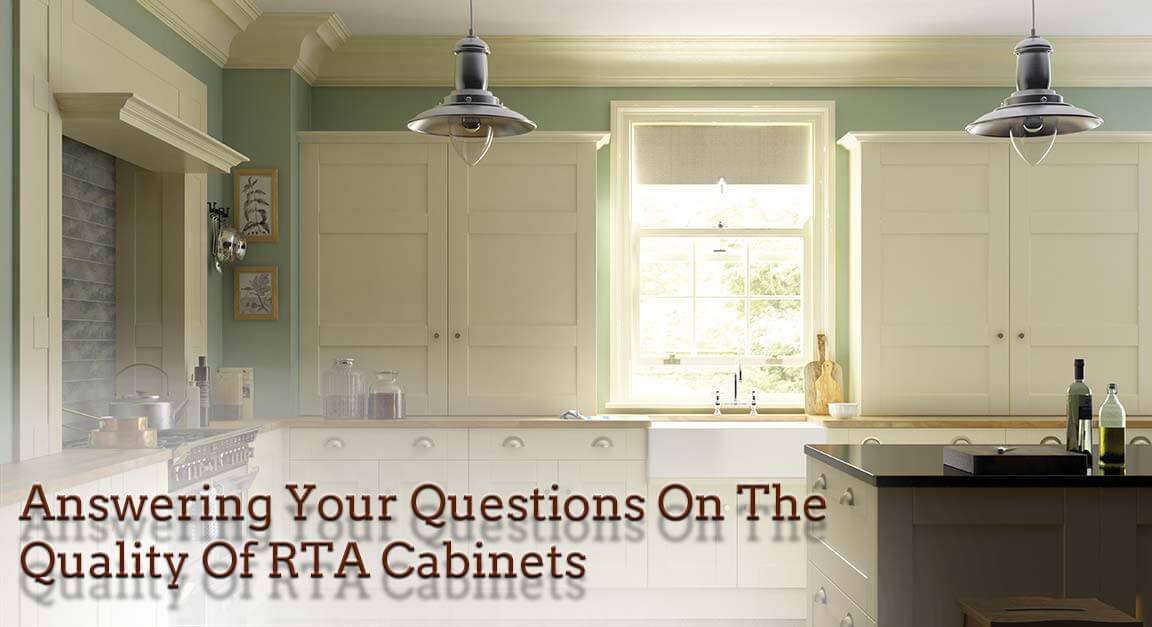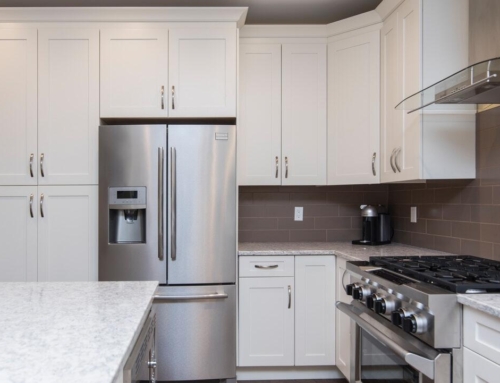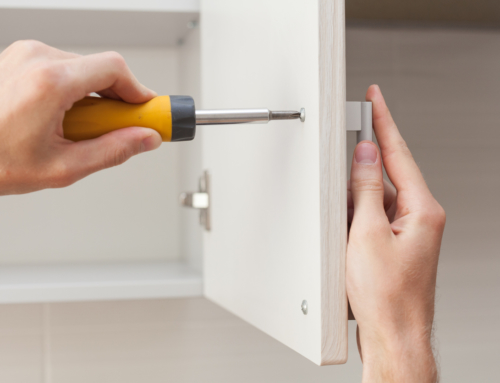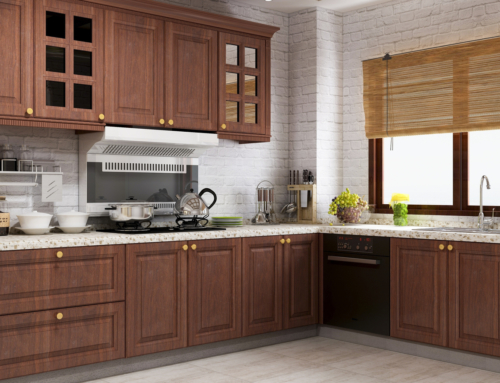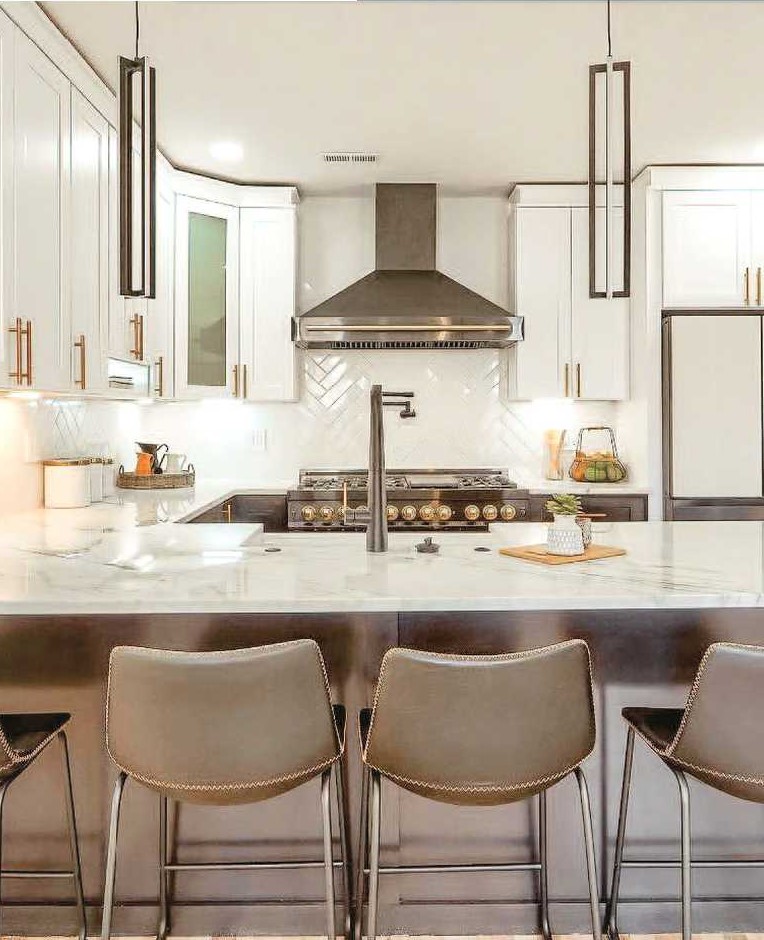To conclude our three-part blog series with Dave, the Cabinet Corner expert, we’re answering some common questions about the quality and durability of RTA kitchen and bathroom cabinets.
In our first two posts, we covered a broad overview of RTA cabinets, as well as the shipping and assembly processes required. Make sure to check out these posts if you need to get caught up!
Us: Thanks, Dave, for meeting with us in our conclusion of ‘Answering Your Questions About RTA Cabinets’.
Dave: You bet, I’m happy to help.
Us: For this post, we wanted to focus more on the quality and workmanship of Cabinet Corner RTA cabinets. First off, what are your kitchen and bathroom cabinets made of?
Dave: Our RTA cabinets are made out of particle board. However, it is not your standard particle board. It’s a high density particle board that has been much more highly compressed. It’s as strong tensile strength wise as plywood of the same thickness. One of the reasons that we went with a high-density particle board is that it doesn’t have the issue of warping that is inherent in plywood cabinets.
Often times as you go to cabinet stores or box stores and look at cabinets and as you look inside them, especially with the plywood cabinets, you will see a lot of real thin plywood or false backs and sides. With almost all plywood cabinets, you’ll see bracing, vertical and horizontal diagonal bracing inside the cabinets. The purpose of using particle board is to help mitigate that warping issue that’s inherent with plywood.
Some people are concerned about crumbling, maybe swelling as cabinets get wet. One of the things that we’ve done to mitigate that issue is to bond a maple melamine skin to the cabinet sides, backs, shelves, bottoms, and tops through a heating process. That bonding heat process does sandwich that particle board between those skins and then we band most of the edges with the same material so that you have very little exposure of the particle board. It is much stronger. It’s a heavier duty cabinet. Unless your cabinet is actually sitting in standing water, you should never have any issues with moisture or water damage. We feel that it’s a superior product to the plywood cabinet boxes.
Us: Is there anything else that I should know as a consumer about the quality of the cabinet?
Dave: We do use what’s called a post and cam lock system on our ready to assemble cabinets. Some of our customers say, “I’m not sure that will hold my cabinets together,” because many of them have experienced say book shelves or furniture that have used post and cam lock systems in putting those things together. As they move that furniture around, especially if it’s a standard particle board, those joints and connection points tend to loosen or come apart, there’s a conceived notion out there that these things are weak, they fall apart.
A part of the answer to that is that once you put your cabinets together and put them in place, it’s not like furniture, where you’re going to be moving it every six months or so. You’re not moving cabinets for one thing. We also use very tight tolerances. The high-density particle board does hold the posts and the cam locks very tightly and strongly. Some customers will use glue or extra screws. We never do that when we assemble and sell these cabinets here locally, so it is not something you have to do. If you want to do it, that’s up to you, but it really doesn’t add much to your cabinets as far as durability goes.
Us: Do you have any complaints coming back in that those are coming apart?
Dave: In the years that I’ve worked here, we’ve never had really any complaints come in about cabinets falling apart, other than when they’ve assembled them sometimes if they’re really rough with the cabinets or damaged them by running into them or something. It’s more of something that any cabinet could have been damaged by.
To this day, we’ve never really had issues of RTA cabinets that are damaged or falling apart as a result of the quality of the cabinet. We do occasionally get customers that come back to us that have experienced damage to the cabinets through a flood or something or a fire to the structure, but usually that’s a replacement issue.
Us: Dave, let’s say I’m thinking of remodeling my kitchen. What do you say to me?
Dave: Good question. First of all, I’d ask questions about what you’re looking at, “Is it a remodel? A new construction? Are you just refacing cabinets?”, which is a question I often get as well. I’d ask if you’ve actually gone through and looked at cabinets, at flooring and what you’ve discovered, and what you’ve found as you’ve been looking.
I would mention at this point that I do RTA cabinets for a company called KnottyAlderCabinets.com and that we ship cabinets all over the US. I’d say we’re the low price RTA cabinet dealer in the United States and that we can beat anybody’s prices, regardless of the quality, although our quality is a better quality for a lot lower price.
You could get something that’s less than satisfactory out there say with the box stores or other cabinet shops, unless you’re going custom. I’d encourage you to come in. I can provide you samples. We do have a showroom where you can see the cabinets. I can send you pictures. We’ll do a free design for you or designs however often you want to change those designs or tweak them until you get to the one that you would like to see.
Us: That’s pretty remarkable customer service. Thanks so much for your time, Dave. This has been very helpful as you were able to answer all of our questions regarding Cabinet Corner RTA cabinets.
Dave: I’m glad I could help!
This concludes our three-part series on ‘Answering Your Questions About RTA Cabinets.’ Be sure to keep following our blog for more tips and tricks about RTA cabinets!


